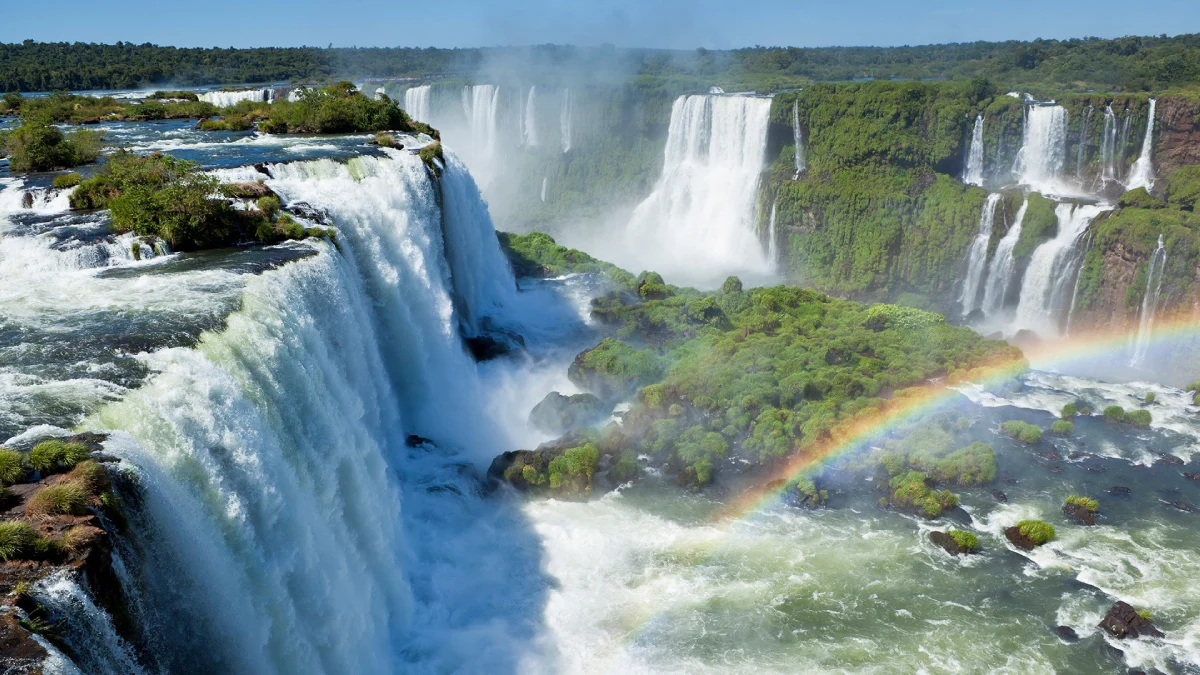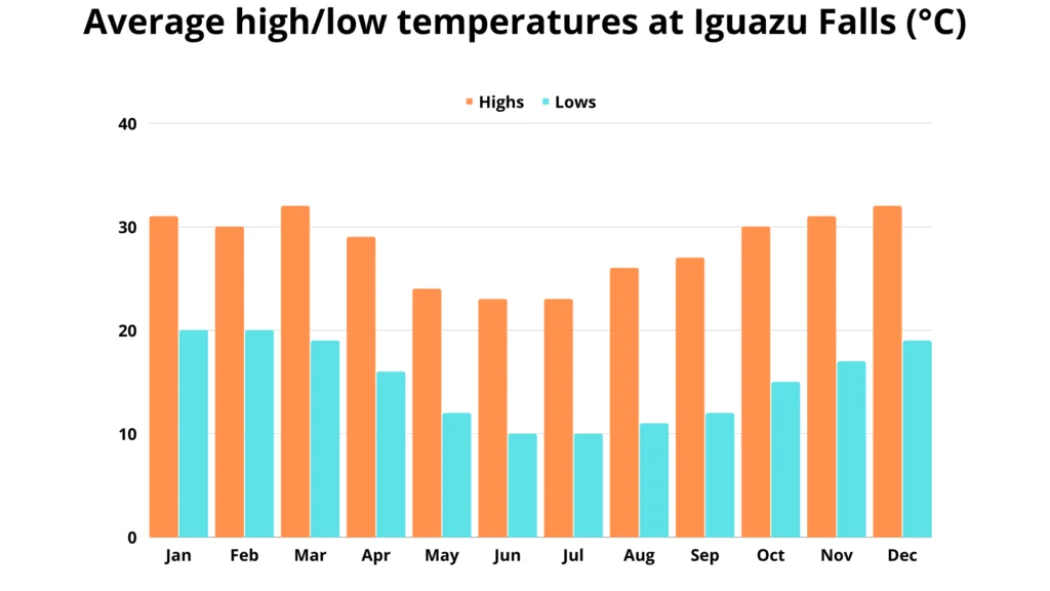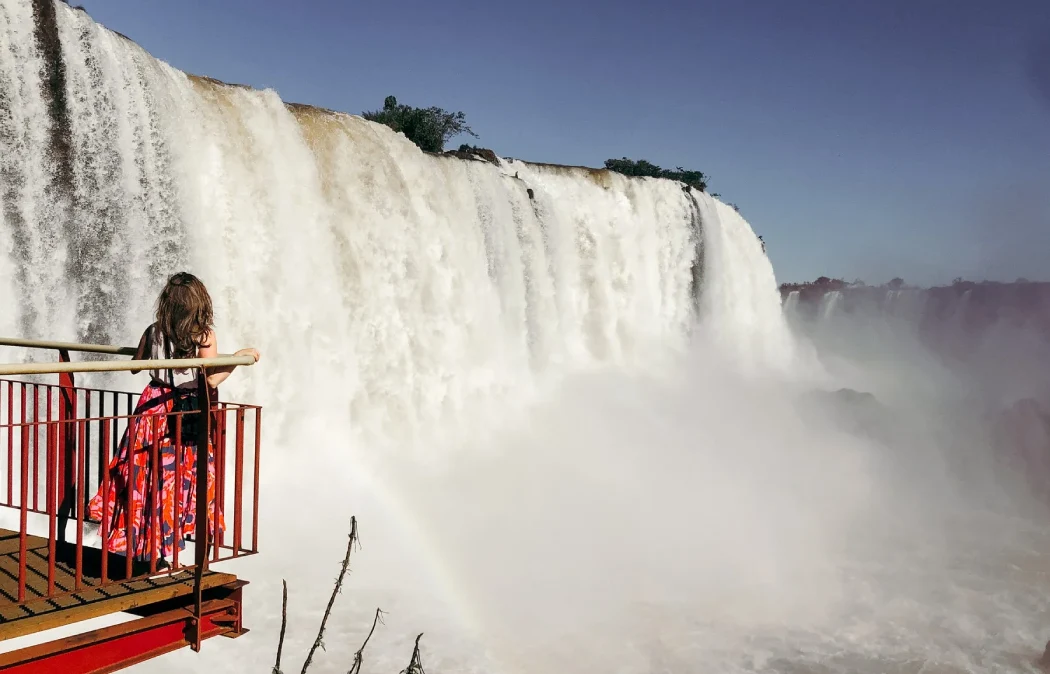Iguazu Falls Weather
Temperatures, weather patterns, and what to pack

Iguazu Falls, one of the most stunning natural wonders in the world, offers a unique experience throughout the year, with each season bringing its own beauty and challenges.
The weather plays a significant role in shaping your visit, whether you’re looking for dramatic water flow, fewer crowds, or the perfect conditions for outdoor activities.
In this article, we’ll guide you through the seasonal weather patterns at Iguazu Falls, helping you decide the best time to visit based on your preferences and what you’d like to experience during your trip.
Choose between the Argentina side or Brazil side tours, or experience both in a full-day tour. For an extra thrill, add a Macuco Safari or Gran Aventura boat ride, or take a helicopter tour for breathtaking aerial views.
Understanding the seasonal weather in Iguazu Falls
Before visiting Iguazu Falls, it’s a good idea to check the weather forecast to ensure you’re prepared for the conditions during your trip.
Each season offers a different experience, from the lush and vibrant rainy season to the more temperate and dry winter months.
Let’s break down what each season has to offer so that you can make the most of your trip to this breathtaking destination.
Summer in Iguazu Falls (December to February) – rainy season

Temperature: 25°C to 35°C (77°F to 95°F), often reaching higher temperatures with high humidity.
Weather: This season brings frequent rain and high humidity, making it feel much hotter. The falls are at their fullest, offering dramatic views with stronger water flow.
What to expect: Expect heavy rainfall, which can sometimes limit access to certain trails or activities. The higher water levels create spectacular views, but it can be hot and uncomfortable for walking.
Autumn (March to May) – transition to dry season
Temperature: 20°C to 30°C (68°F to 86°F).
Weather: Rainfall begins to decrease, and temperatures are more comfortable with lower humidity. This season is less crowded, offering a more peaceful experience.
What to expect: The water levels are still high enough to offer stunning views of the falls, but the weather is more manageable, making it perfect for outdoor activities.
Winter (June to August) – dry season
Temperature: 12°C to 22°C (54°F to 72°F).
Weather: The dry season brings cooler temperatures and less humidity, making it ideal for hiking and exploring. While it’s cooler, it’s also more comfortable for outdoor activities like boat tours and jungle hikes.
What to expect: The falls are still beautiful, and although the water flow is lower compared to summer, it’s a great time for visitors who prefer a milder climate. However, mornings and evenings can be quite chilly.
Spring (September to November) – transition to rainy season
Temperature: 20°C to 30°C (68°F to 86°F).
Weather: Temperatures begin to rise again, and occasional rain showers return as the region heads back into the rainy season. Humidity starts to increase but remains manageable.
What to expect: This is a great time to visit for those who want to enjoy comfortable weather and slightly fewer tourists than in peak summer. The falls are still impressive, but it’s a quieter time to explore.
Best time to visit Iguazu Falls based on weather

Dry season (March to October): The dry season is considered the best time to visit Iguazu Falls, with mild temperatures and less rainfall, making it ideal for exploring the trails and enjoying outdoor activities. During this period, the weather is pleasant, and the falls are accessible without the inconvenience of heavy rain.
Rainy season (November to February): While the rainy season brings higher water levels and more dramatic falls, it also comes with higher humidity and more rainfall. Expect warmer temperatures, often exceeding 30°C (86°F), which can make hikes and boat rides more challenging. The park is also more crowded with tourists.
What to pack for different weather conditions at Iguazu Falls
Iguazu Falls experiences varying weather throughout the year, so it’s important to pack accordingly. Here’s a guide on what to bring based on the season:
Rainy season (November to February)
- Waterproof clothing: A raincoat or poncho is essential, as frequent rain is common during this time.
- Waterproof footwear: Waterproof boots or shoes with good grip are crucial for slippery trails and wet conditions.
- Insect repellent: High humidity during this season attracts insects, so bring a reliable insect repellent.
- Swimwear: For the Macuco Safari or boat rides, pack swimwear to enjoy the thrilling water activities.
- Waterproof bag: Keep your camera and electronics safe from water with a waterproof bag.
Dry season (March to October)
- Comfortable hiking shoes: The trails are easier to navigate, but still be prepared for some walking.
- Light clothing: Breathable, light clothing for daytime temperatures, but long sleeves and pants for evening walks, as temperatures can cool down.
- Sunscreen & hat: With clear skies, protect yourself from the sun with sunscreen and a hat.
- Sunglasses: Sunglasses to shield your eyes from the bright sunlight while walking around the falls.
- Camera/Phone: For capturing photos in the stunning, clear weather, be sure to bring your camera or phone (with a waterproof case).
General items for any season
- Reusable water bottle: Staying hydrated is important, especially when walking around the trails.
- Towel: Bring a small towel to dry off after the boat ride or misty trails.
- Daypack: A small backpack to carry your essentials like water, snacks, and extra clothing.
